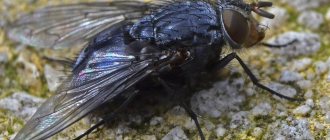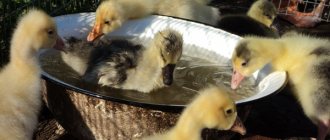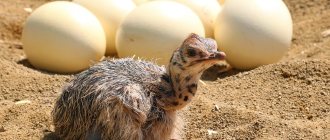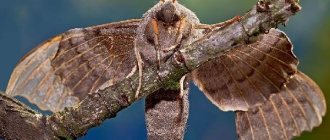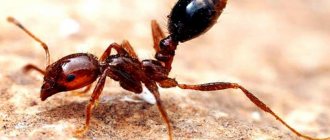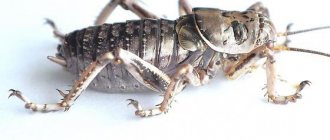Mating rituals of great grebes
These birds spend their time outdoors, making them easy to observe, and their spectacular courtship displays are the subject of one of the earliest in-depth studies of avian behavior.
The most common maneuver is the “head shake,” in which members of a pair swim toward each other and shake their heads from side to side. This ceremony is interrupted by the "pulling" of feathers. From the outside, the grebes seem to be plucking the feathers on the back of their chosen one, but in reality they are just making movements with their heads. Then come more complex manifestations of sympathy. The male and female dive for underwater plants, tear out the stems, emerge and quickly swim towards each other. They meet chest to chest, rise out of the water, shake their heads from side to side, still holding the weed in their beaks.
After choosing a mate and completing the colorful courtship ritual, when the birds have already created a union, they begin to lead a solitary lifestyle and lay eggs.
Great grebe's nest
Nutrition
Since the grebe's favorite habitat is the water element, it easily and quickly hunts all kinds of fish of various sizes (from very small representatives to relatively large specimens).
Sometimes the bird diversifies its diet with frogs, waterfowl insects, crustaceans, vegetation that can be found on the banks and surface of reservoirs, and other similar food. The main method of hunting that great grebes actively use is diving to a depth of up to four meters, where the bird deftly tracks down fish and then appears with it on the surface.
Grebe eats fish
The whole procedure takes her no more than seventeen seconds, but in the cold season it becomes much more difficult for her to hunt, so the duration and depth increase somewhat.
Features of raising chicks
Great grebes have a surprisingly long breeding season. Birds lay eggs from February to October. The pair builds at least one nest. Birds construct auxiliary floating “platforms” for other purposes, including mating.
During incubation, the sitting parent (both members of the pair incubate the eggs) will leave the nest if it detects a predator in the distance. The bird covers the eggs with algae, so they quickly change color from white to dull brown. This reduces the likelihood that the eggs will be seen by a predator.
Great grebe with chicks
The chicks are also at risk of being eaten if they spend too long in the nest without mom and dad, so they "stand up" within a few hours of hatching. Parents carry small chicks on their backs, making it easier for the whole family to swim away from the shore.
The chicks are striped, their color resembles the uniform of prisoners. They are excellent swimmers as soon as they hatch, but for safety and to maintain body heat, the juveniles cling to the back of one of the parents and perch between the wings. They even hold onto the back while an adult dives.
The young are fed by one parent while the brood sits on the back of the other. The peculiarity of later rearing is not in the teamwork of the grebe, but in the “distribution of offspring”, with each parent receiving custody of their part of the brood and ignoring other chicks. But sometimes older chicks from an earlier brood join in feeding the juniors and help either parent.
Features and habitat
The Great Grebe is a large bird, and its weight varies from 600 grams to one and a half kilograms. Males are usually larger than females, and their wing length can exceed 20 centimeters. The plumage of the bird is predominantly dark brown, with the head and lower part of the body often white or light.
In the summer, the great grebe is very easy to recognize even from afar, since it has a characteristic appearance feature, namely, colored feathers that grow on its head in the form of peculiar “horns.” Also a characteristic feature of the appearance of the great grebe is a special “collar”, which is located directly on the neck and usually has a chestnut-red tint.
With the onset of cold weather, the motley “horns” of the grebe become much shorter, and the “collar” completely disappears without a trace. The great grebes have a flat beak, which is most often red in color with a light tip.
At the current time, ornithologists know about 18 species of birds, with 5 species of grebes in the Red Book , and shooting them is strictly punished according to current legislation.
Today, the great grebe has a fairly extensive habitat, and it can be found not only throughout modern Europe, but also on the African continent, Australia, New Zealand, Asia and the Baltic countries.
In Russia, the great grebe lives in Western and Central Siberia, near Nizhny Novgorod and south towards Kazakhstan. The great grebes like to settle in the middle of the taiga, steppes and around standing bodies of water. It also often chooses areas in the middle of vegetation surrounding lakes and medium- and large-sized bets.
Great grebe in flight
Great grebes are adapted to an aquatic lifestyle. Therefore, it is difficult for a great grebe to fly, unlike, say, meadow or forest birds. When lifted into the air, it takes a long time to run up, trying with all its might to break away from the surface of the water. Therefore, the great grebes avoid small lakes and ponds.
Why do people love to watch great grebes?
When on the water, the Great Grebe looks graceful, its ornate plumage and stunning courtship rituals make the birds a favorite among aquatic life lovers.
Character and lifestyle
Grebe nests can most often be found in thickets of reeds and tall grass near bodies of water with standing water or with a weak current, and a prerequisite must be the presence of fish in them, which, in fact, is what the bird feeds on.
The territory must be relatively open and well warmed by sunlight. The great grebe arrives here with the onset of spring days, when the ice begins to rapidly melt, and very favorable conditions arise for the full functioning of this bird.
The Great Grebe is a “duck” that prefers to settle in pairs, but in some cases you can meet entire colonies of these birds that arise directly around reservoirs with favorable conditions and with a lot of fish.
The nests are distinguished by the fact that they usually float directly on the surface of the water, in rare cases resting on the bottom of the lake or the bottom. In this way the bird protects itself from its enemies, of which it has sufficient quantities.
Going to the middle of the reservoir with her chicks in the nest, the grebes are in relative safety, and even if a marsh harrier or other predators approaches, she hides her own offspring in her plumage, and dives with all this “wealth” to the bottom, where she remains until those until the danger passes by.
Since the diving grebe has small, short legs, it is not very convenient for it to move on land. Therefore, she feels much more comfortable on the surface of the water. Even under water, the bird moves extremely quickly, skillfully using its own small paws, which give it a certain dynamics while moving in this element.
Grebes fly very rarely, most often making forced flights only for wintering. During the rest of the period, the bird feels much more confident, swimming and diving deep underwater in search of food.
Appearance of the bird
The grebe duck or great grebe belongs to the order Grebes. Of course, this bird has nothing in common with mushrooms, except for the name.
The length of the grebe varies from 25 to 75 cm, and its body weight - from 120 grams to one and a half kilos. The bird's neck and beak are long and graceful. There is a characteristic red “collar” on the neck - the calling card of the great grebe. The back of the bird is brown, and the abdomen and chest area are covered with white plumage.
In the spring months, dark feathers that look like ears form on the head of the great grebe. In winter, they, like the “collar”, are absent.
The bird, like all ducks, is edible, but due to the unpleasant taste of the meat, it is rarely eaten.
Ornithologists know of 18 species of grebes. Of these, five are on the verge of extinction. Great grebes are protected by law, and shooting of rare species is strictly prohibited.
Behavior in the wild
Migratory birds fly rarely and reluctantly. But the Great Grebe is an excellent swimmer and diver. The grebe is very agile when in its natural element. She deftly catches small and medium-sized fish.
Great grebes live in pairs, and sometimes form entire groups. This makes it easier for them to defend themselves from enemies, of which there are many in the wild. The main ones are the marsh harrier, as well as mammals and birds of prey that live in forests.
Great grebes build their nests in thickets on the surface of water bodies in order to remain invisible and inaccessible to aggressors.
Habitat
Great grebes are found in fresh, quiet water bodies throughout almost all of Eurasia. It lives in reeds and river thickets, choosing low-flowing water bodies for life. This is important when the Great Grebe has offspring and starts building a nest.
The nests of Grebe ducks are one of the most original; their home looks like a raft, built mainly from reeds. The nest is either attached to reeds and thickets, or drifts freely through the water. Great grebes often have to strengthen the nest due to constant moisture to prevent it from flooding.
What does the great grebe eat?
The bird's main food is fish, both small and large. The great grebe gets it very cleverly, as he can easily dive after it even to great depths. The entire hunting process usually takes no more than 16-17 seconds. Sometimes the great grebe can feast on frogs, crustaceans and those insects that it can swim with. The bird also eats vegetation that it finds on the water surface or on the shore.
Origin and description of the great grebe
Great Grebes are the largest bird species in Europe. The plumage on the back, as well as on the sides, is multicolored, with transitions from brown to red-chestnut. The back of the neck is darkish brown, but the withers and a small part of the neck are radically snow-white. Some parts of the feather have an orange tint, but this color can only be found during the breeding season.
The bird begins to acquire such a variety of colors in the winter and ends in the spring. In the summer, she can be easily recognized by the so-called comb-horns, which are on her head and resemble a crown. Closer to the winter period, this beauty becomes shorter and less striking.
Juveniles are distinguished by dark stripes on their cheeks.
In addition, grebes are good swimmers. Nature took care of this, providing them with strong short legs laid back and a shortened tail.
Scientists discovered an interesting fact by conducting molecular studies and determining their connection with the flamingo order. At least 11 morphological characters are identical, which do not coincide with other species. Many of these findings were fully identified with flamingos, but not with grebes. Most likely, as scientists have concluded, this species can be considered an evolutionary intermediate link between these individuals.
Findings in fossils have provided information that these birds occurred in the late Miocene or Oligocene. But part of this genus became extinct and only those that arose in the Southern Hemisphere have reached us.
Birds have a length from 45 cm to 0.5 meters. The wingspan reaches 70 cm, and the weight varies from 800 g to 1.5 kg. The color of males is more pronounced. They have gorgeous plumage at the collar and a bright red bill with a brown comb combination and a bright white top.
Winter plumage of the great grebe
The eyes against this background stand out with a reddish-orange tint, and the legs have a subtle green tint.
Small chicks are endowed with dense and thick down, the head and neck with dark and white stripes running along the ridge. The lateral parts in the first years of life are less bright, brownish-white and black-brown striped. And the chicks have a white belly.
Nest
Great grebes build a floating nest from dead vegetation (mainly reeds and reeds), it is up to 60 cm in diameter and 80 cm in height, and its underwater height exceeds half a meter. The nest can be floating, but more often its base rests on the bottom of shallow water or is anchored on several reeds, which serve as a kind of frame for it. The birds place their nest in reed thickets to protect them from waves, but so that the parents can freely swim to the nest and, in case of danger, dive into the water. The Great Grebe's nest is always wet, which affects the entire egg incubation regime. After all, wet material has a high heat capacity. When the grebe is absent, the cooling rate of its wet nest is 4.5 times less than, for example, the dry nest of a black-headed gull. Usually the nests are located singly, but in lakes where there are a lot of fish, small colonies can be found.
Why is the great grebe called the Great Grebe?
This bird is a representative of the order Grebes.
But it has nothing to do with poisonous mushrooms. This bird was nicknamed Big Grebe because its meat has an unpleasant specific smell. It is almost impossible to eat it, as the taste leaves much to be desired. This feature saves the great grebe from hunters. During those periods when duck hunting is officially permitted, no one encroaches on the life of this feathered creature.
Interesting Facts
The Great Grebe in its natural habitat lives from 15 to 20 years. If a duck is kept at home, its life expectancy increases by five years.
There is practically no filling in the bones of the toadstool. The presence of air layers provides the duck with ease when swimming and the ability to maneuver in search of food.
Sometimes the great grebe plucks from the body and eats its own plumage. She needs this to establish the digestive process, which is disturbed by an excess of fish bones.
In Central Europe, the duck leads a sedentary lifestyle, but in Eastern and Northern Europe it does not. Birds return to their homeland from warm regions between February and May. They go to wintering in October-November.
The great grebe is active mainly during the daytime, but if it is a moonlit night, it is also awake.
If the article was useful and interesting to you, share this information with your friends on social networks and leave your comments.
Lifespan
This bird can safely be classified as a long-livers. However, their life expectancy directly depends on their living conditions. So in freedom they live from fifteen to twenty years, but in captivity this figure increases to twenty-five years.
Their life expectancy in freedom is influenced by many factors, including human guilt and the presence of natural enemies. Natural enemies include the crow and the reed harrier. These birds of prey feed on grebe eggs and destroy their nests. For grebe chicks, carnivorous fish pose a huge danger, which often drags them away from their parents.
Man’s guilt lies in his neglect of the environment and ecology. Today, many unscrupulous people are dumping waste into water bodies, which significantly pollutes the environment. This, in turn, can not only reduce the population of this species, but also the lifespan of already living representatives of the grebe bird.
Mommobile


